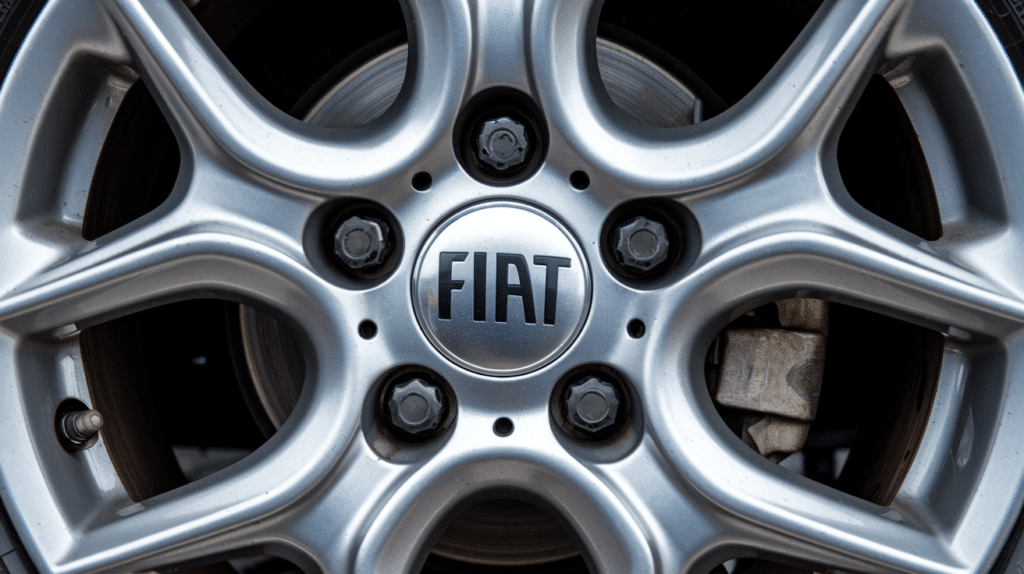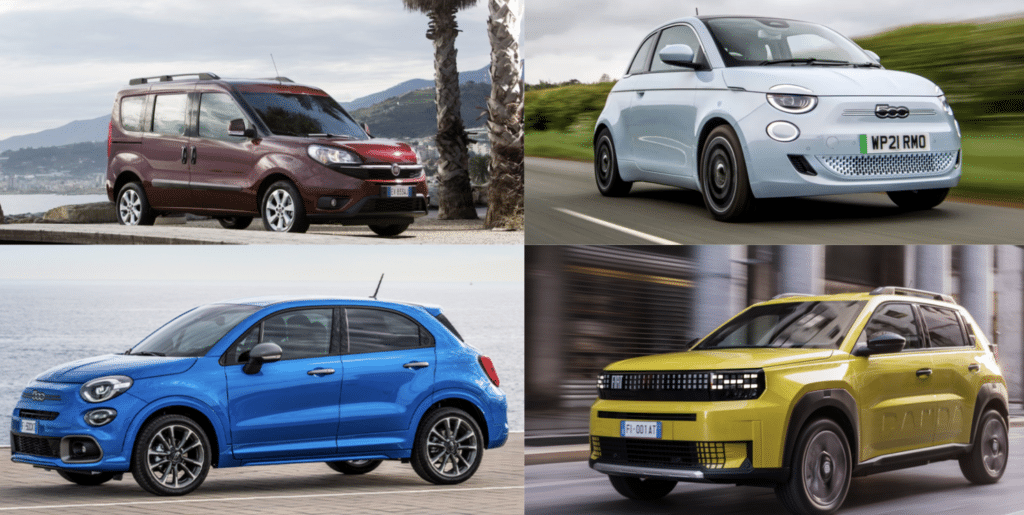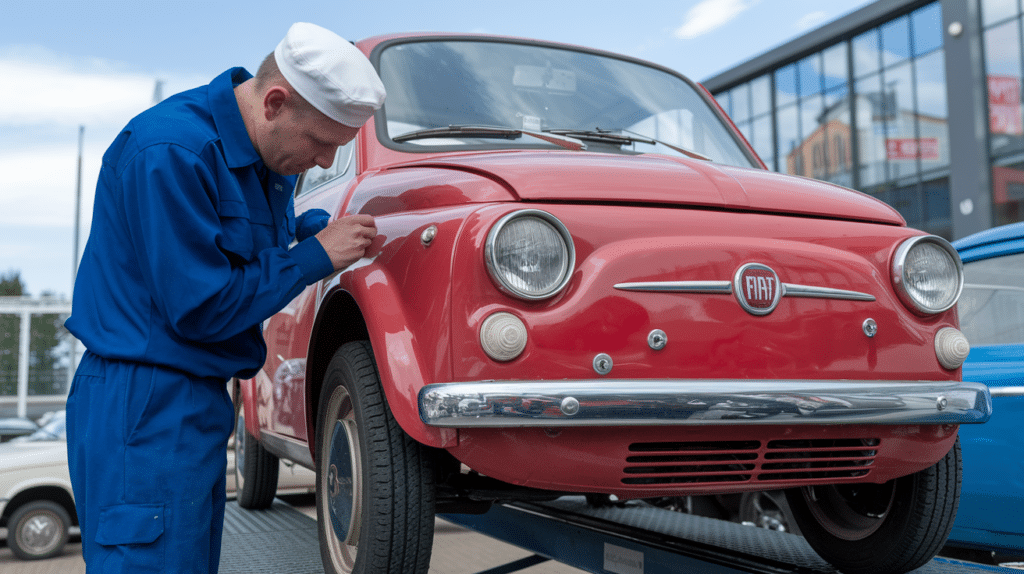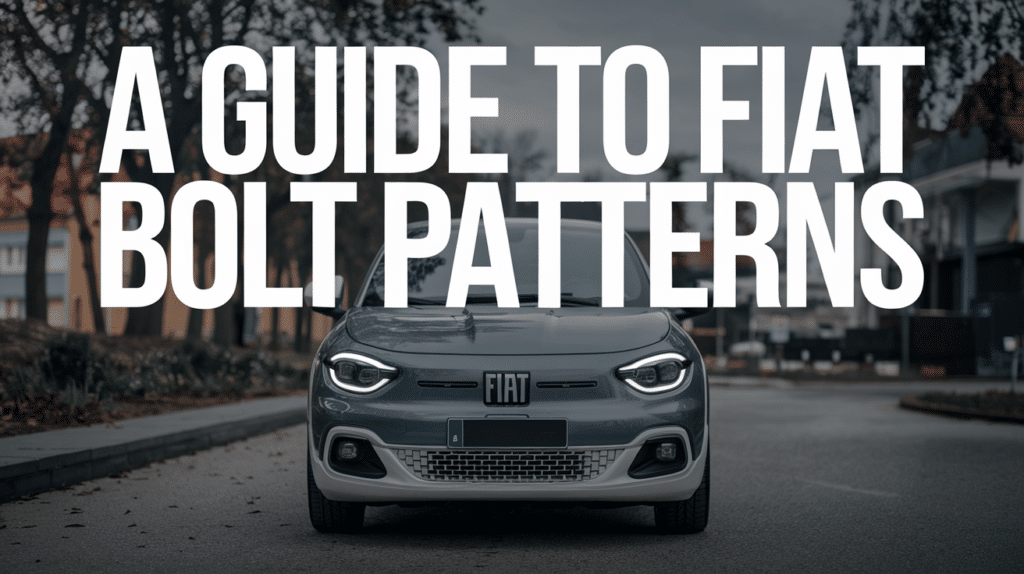I’ve been digging deep into the world of Fiat bolt patterns lately, and trust me, it’s more fun than it sounds! After seeing countless Fiat owners struggle with wheel fitment issues, I decided to share my knowledge.
A proper understanding of bolt patterns can save you both money and headaches. Did you know that most modern Fiats use a 4x98mm pattern, but there are some surprising exceptions?
If you’re restoring a vintage Uno or customizing your new 500X, getting the bolt pattern right is crucial.
In this guide, I’ll walk you through everything you need to know about Fiat bolt patterns – from identifying your model’s specifications to understanding cross-generation compatibility.
Don’t worry if it seems technical; I’ll break it down into bite-sized, easy-to-digest pieces. Let’s get rolling!
What Is the Bolt Pattern for A Fiat?

A bolt pattern, also known as a bolt circle diameter (BCD) or pitch circle diameter (PCD), is crucial for Fiat vehicles when it comes to wheel fitment. For most modern Fiat models, the common bolt pattern is 4×98 mm, which means:
- 4 represents the number of lug holes/bolts
- 98 indicates the diameter in millimeters of the imaginary circle formed by the centers of these holes
However, some Fiat models use different patterns:
- The Fiat 500L uses a 5×98 pattern while some older Fiat models used 4×98 or 4×114.3
- The Fiat Fullback, being based on a Mitsubishi platform, uses a 6×139.7 pattern
Always verify your specific Fiat model’s bolt pattern before purchasing new wheels, as using incorrect specifications can lead to poor fitment and unsafe driving conditions.
Understanding Fiat Bolt Patterns and Their Compatibility

New Generation Fiat Models (2007-Present)
- Modern Fiats mainly use 4x98mm bolt patterns, making wheel swaps easy between 500, 500L, and Panda models. Just check the offset and center bore specs before switching.
- The 500X breaks tradition with its 5x110mm pattern.
- It shares wheels with some Alfa Romeos and handles higher performance needs.
- All new Fiats use M12x1.25 lug nuts, keeping maintenance simple and consistent.
Older Generation Fiat Models (Pre-2007)
Classic Fiats (Uno, Punto, 126) stuck to 4x98mm patterns.
This makes finding replacement wheels easier for vintage models.
Center bore sizes vary between older models. You might need hub-centric rings for proper fit, even with matching bolt patterns.
Watch out for special editions. Some sport models used unique patterns, so always verify before swapping.
Cross-Generation Compatibility
- The 4x98mm pattern spans both old and new Fiats.
- Mix and match for custom looks, but verify compatibility.
- Check load ratings and offset measurements when mixing generations. Modern safety standards changed these specs.
- Older-to-newer wheel swaps may need hub rings and special lug nuts. This ensures proper fit despite design changes.
List of The Correct Bolt Pattern for A Different Fiat Models
| Fiat Model | Year Range | Bolt Pattern | Lug Count | Thread Size |
|---|---|---|---|---|
| 500 | 2007-Present | 4x98mm | 4 | M12x1.25 |
| 500L | 2012-Present | 4x98mm | 4 | M12x1.25 |
| 500X | 2014-Present | 5x110mm | 5 | M14x1.50 |
| Panda | 2012-Present | 4x98mm | 4 | M12x1.25 |
| Punto | 2005-2018 | 4x98mm | 4 | M12x1.25 |
| Tipo | 2015-Present | 4x98mm | 4 | M12x1.25 |
| Bravo | 2007-2016 | 4x98mm | 4 | M12x1.25 |
| Doblo | 2010-Present | 5x98mm | 5 | M12x1.25 |
| Ducato | 2006-Present | 5x130mm | 5 | M14x1.50 |
| 126 | 1972-2000 | 4x98mm | 4 | M12x1.25 |
| Uno | 1983-1995 | 4x98mm | 4 | M12x1.25 |
| Coupe | 1993-2000 | 4x98mm | 4 | M12x1.25 |
| Barchetta | 1995-2005 | 4x98mm | 4 | M12x1.25 |
| Multipla | 1998-2010 | 4x98mm | 4 | M12x1.25 |
Key Takeaway:
- Always verify specifications for your specific model year
- Center bore diameter and wheel offset also need to be considered
- Some regional variations may exist
- Performance or special editions might have different specifications
How to Identify the Correct Bolt Pattern for A Specific Fiat Model
Direct Measurement:
- Grab your measuring tape and get hands-on with your Fiat.
- For 4-lug wheels, measure from the center of one lug hole to the center of the opposite hole.
- For 5-lug patterns measure from the back of one lug hole to the center of the second or third hole.
Pro tip: Take multiple measurements to ensure accuracy – it’s better to spend an extra minute measuring than buying the wrong wheels!
VIN Number Check:
- Pop your hood and locate your Vehicle Identification Number (VIN). Using this unique code, contact your local Fiat dealer or use an online VIN decoder tool.
- They can pull up your exact model specifications, including the bolt pattern.
- Just remember to have your registration handy – dealers often ask for this to verify ownership.
Digital Tools:
Download wheel fitment apps like “Wheel-Size” or “Tire Size Calculator.”
Input your Fiat’s year, model, and trim level.
These apps often provide not just bolt patterns, but also recommended tire sizes and offset measurements.
Save your car’s profile in the app for quick future reference.
Physical Template Method:
- Create your own bolt pattern template using cardboard or thick paper.
- Place it over your wheel hub and mark the lug holes.
- Take this template to your local tire shop or use it for online wheel shopping.
- Keep this template in your glove box – it’s a handy reference when you’re checking out wheels at auto shows or junkyards!
Comparisons Between Fiat’s and Other Brands’ Bolt Patterns with Prices
| Brand & Models | Common Bolt Pattern | Avg. OEM Wheel Price | Avg. Aftermarket Price | Compatibility Notes |
|---|---|---|---|---|
| Fiat (500, Panda) | 4x98mm | $180-250 | $120-200 | Limited cross-brand compatibility |
| Mini Cooper | 4x100mm | $300-450 | $150-300 | More aftermarket options available |
| VW Polo | 5x100mm | $250-350 | $140-250 | Widely compatible with other VW/Audi models |
| Renault Clio | 4x100mm | $200-300 | $130-220 | Good compatibility with other French brands |
| Peugeot 208 | 4x108mm | $220-320 | $140-240 | Compatible with most Peugeot/Citroën models |
| Toyota Yaris | 4x100mm | $230-330 | $130-230 | High aftermarket availability |
| Opel/Vauxhall Corsa | 4x100mm | $210-310 | $125-225 | Common pattern, easy to find replacements |
| Ford Fiesta | 4x108mm | $220-320 | $135-235 | Shares pattern with many Ford models |
Price Factors:
- OEM wheels typically cost 30-40% more than aftermarket options
- Prices vary based on wheel size and design
- Special finishes or lightweight construction can increase costs by 50-100%
- Regional pricing may vary significantly
Note: Prices are in USD and represent average market rates as of early 2024. Actual prices may vary based on location, supplier, and specific wheel specifications.
How to Maintain Bolt Patterns on Your Fiat

- Check your Fiat’s lug nuts monthly with a calibrated torque wrench
- Maintaining 85-95 ft-lbs of torque – loose nuts can damage the bolt pattern over time!
- Apply a thin coat of anti-seize compound to the hub center (never on lug seats) during wheel changes to prevent rust from affecting bolt hole alignment
- Rotate wheels every 6,000-8,000 miles and have a professional inspect bolt holes for any signs of elongation or wear that could compromise the pattern
- When storing seasonal wheels, clean all bolt holes thoroughly
- Use thread protectors to maintain the integrity of your Fiat’s bolt pattern
- Keep a properly sized torque wrench and lug pattern measurements (108mm x 4 for most Fiats) saved in your phone for quick reference during emergencies.
Conclusion
There you have it – mastering Fiat bolt patterns isn’t rocket science after all!
Just like I learnt while writing about the Tesla Model 3’s bolt specifications, each manufacturer has their unique approach to wheel fitment. The key is staying informed and double-checking your measurements.
If you’re rocking a classic Fiat with its tried-and-true 4x98mm pattern or cruising in a 500X with its beefier 5x110mm setup, knowing your bolt pattern is your ticket to hassle-free wheel upgrades and maintenance. I’ve seen too many enthusiasts learn this the hard way!
Got questions? Feel free to check out my Tesla Model 3 bolt guide for more manufacturer-specific insights.
Remember, in the world of bolt patterns, measure twice, buy once – your Fiat will thank you!


